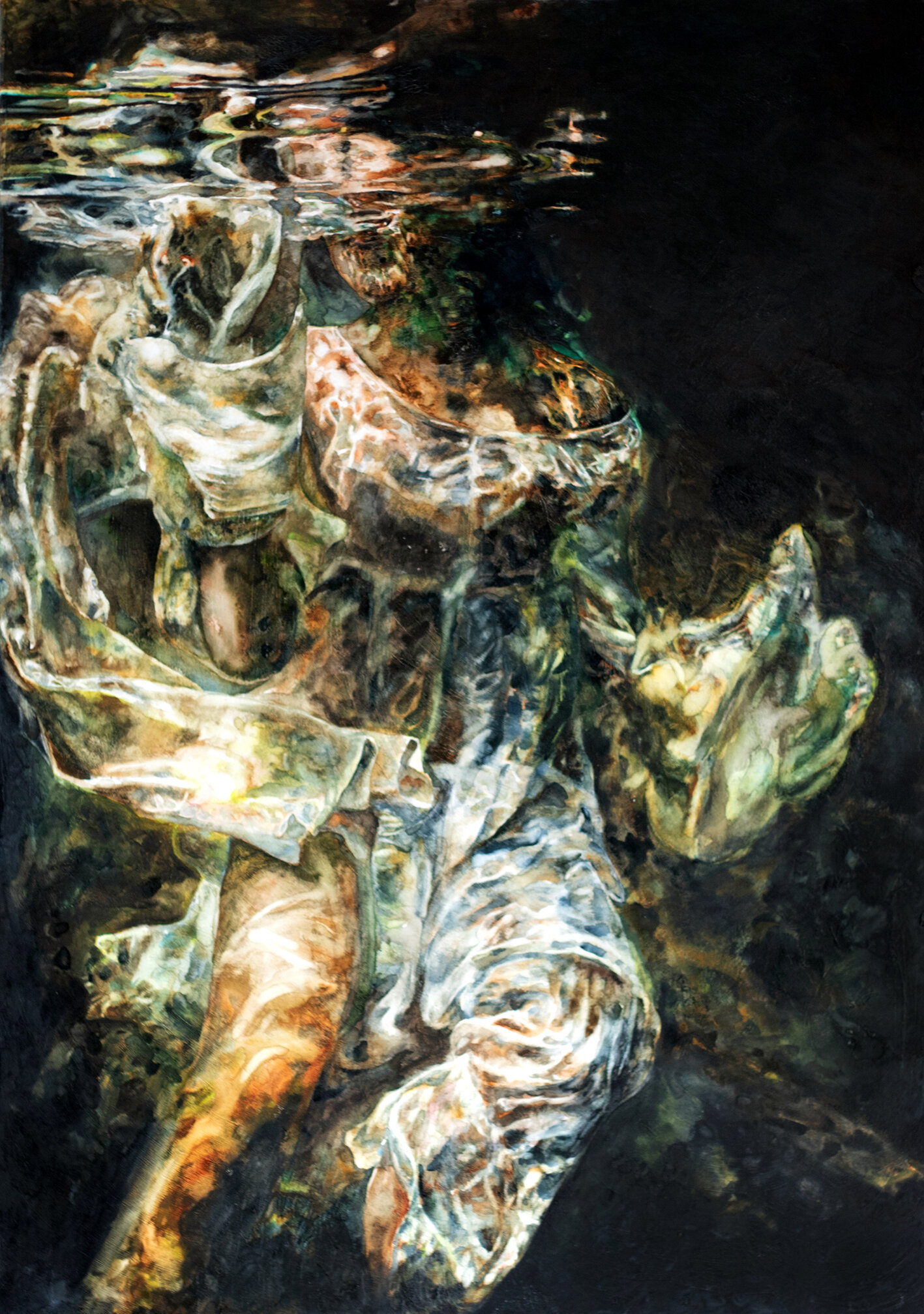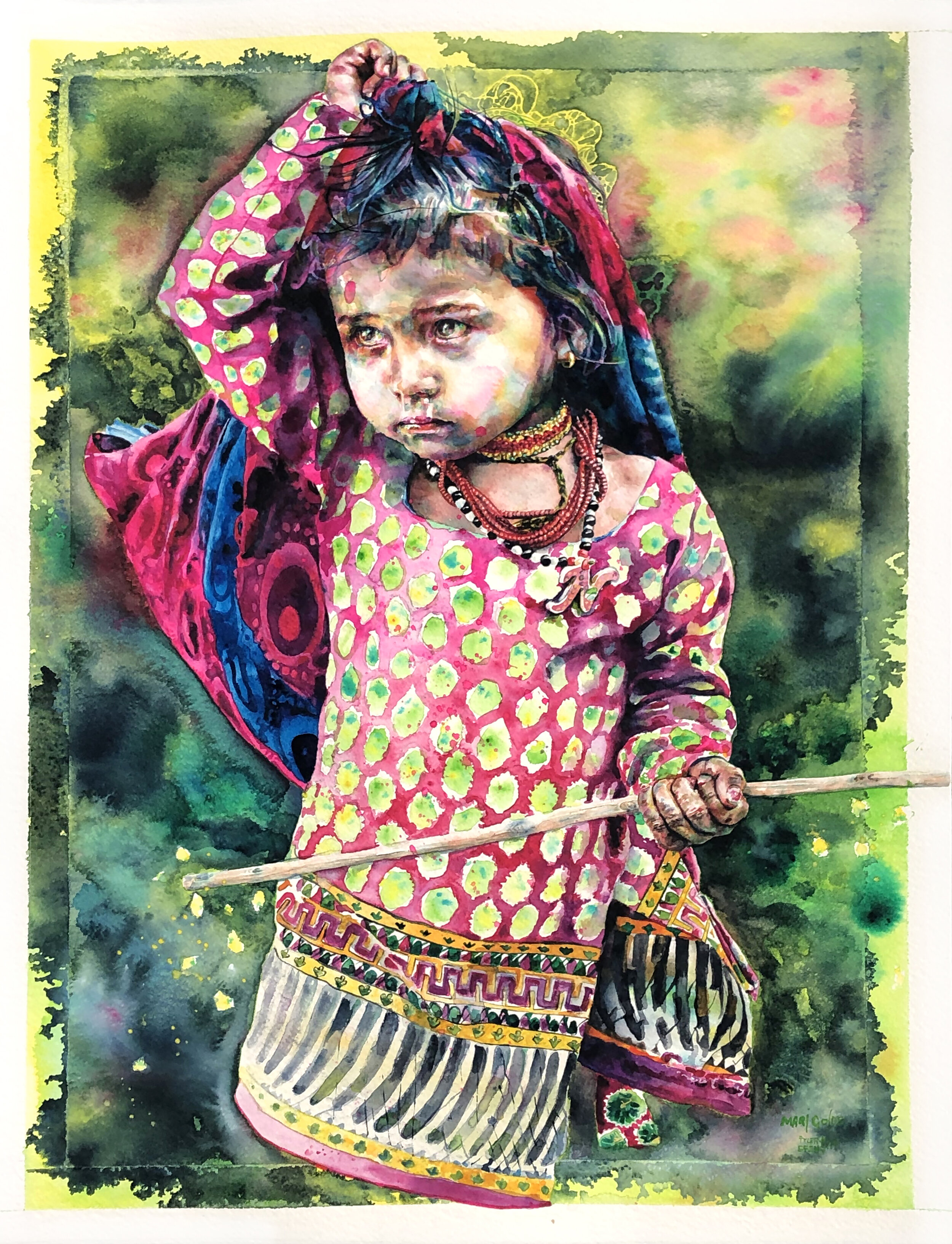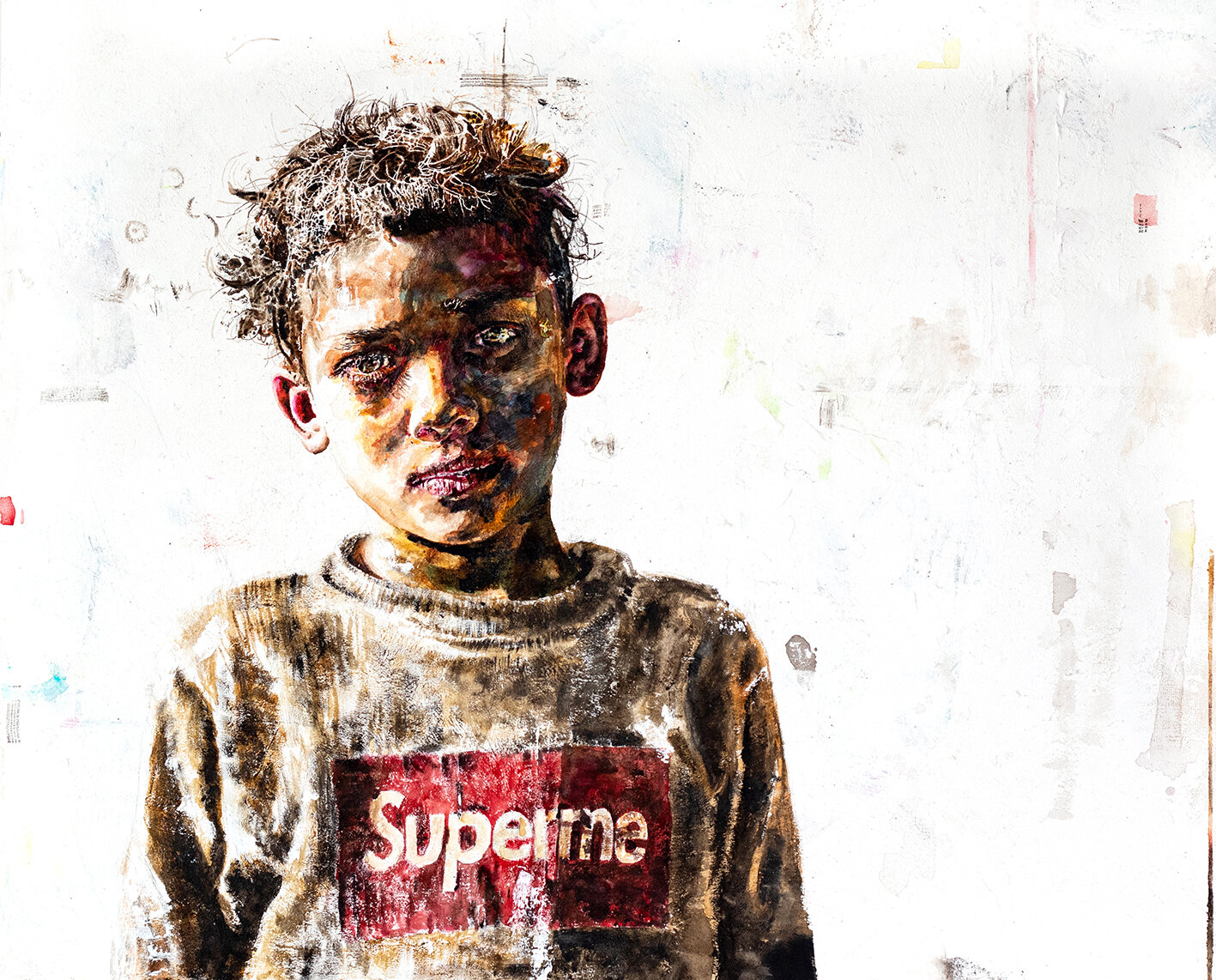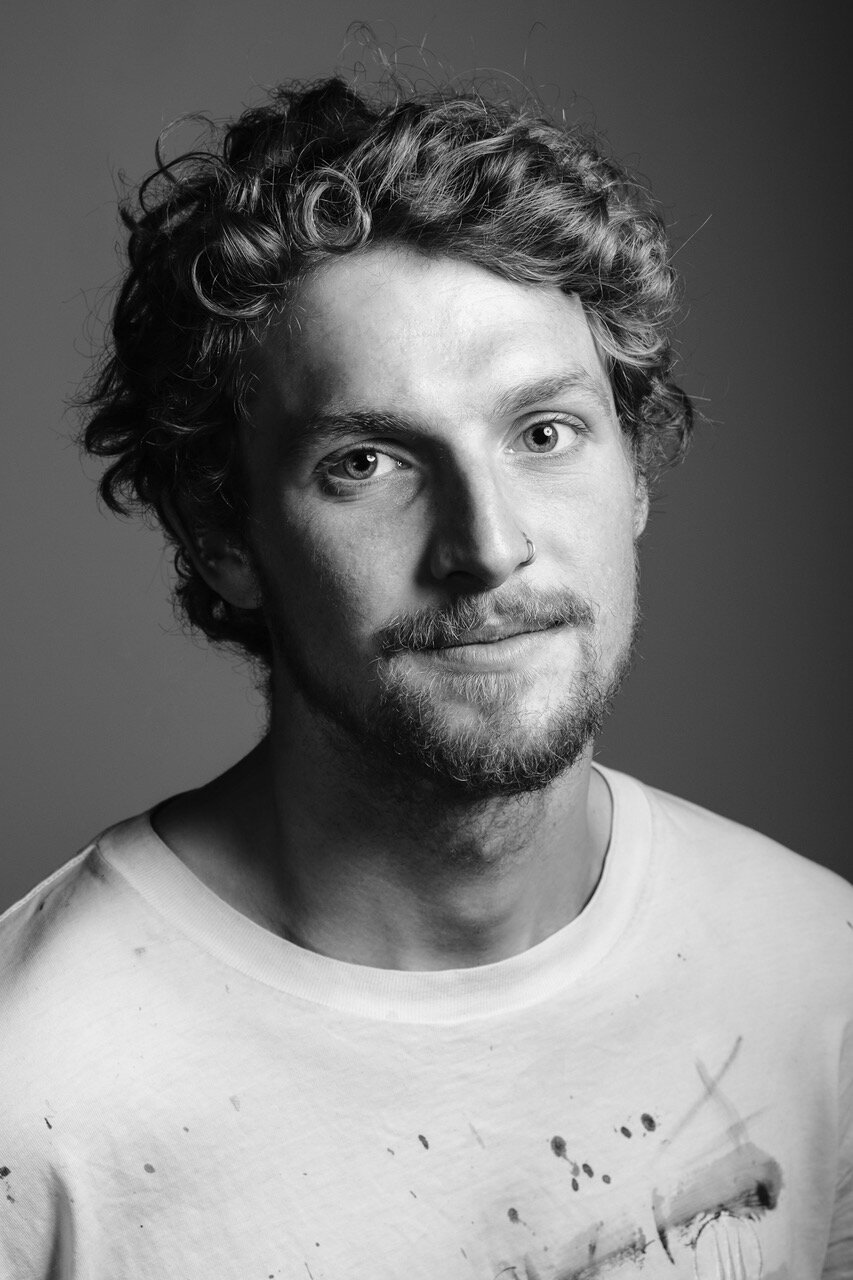Welcome home Tyler.
Tyler first came to XCHC in January after finding us on Stusu, a platform that connects artists with available studios. He has returned from Dunedin after lockdown, knowing the environment at XCHC would help him prepare and produce work for his next show.
He’s now living in Unit-1, a residency space and is found most nights working late in the studios.
Here’s more from Tyler.
Kia Ora Christchurch! I'm Tyler and I paint watercolour portraits!
I'll be staying at the XCHC over the next wee while, and working to address some of the controversial ideas in the art world which I feel have been holding me back in my artistic career.
The various watercolour techniques I use are done at a size usually restricted to oil and acrylic paintings which can offer a uniquely modern view of the watercolour medium. I try to work with opposites of the visual artistic spectrum - controlled and precise detail versus abstract accidents - to convey an accessible and emotional narrative in my depictions.
Upon returning to New Zealand from an art collective in Barcelona, I was ecstatic to find the XCHC on my way, travelling up the South Island. Art collectives like this are the closest thing to art school that I've experienced, and - god! - one with such opportunity, resources and divine vegan food in abundance is essential for my growth as a human, let alone artist.
Having come in with merely the intention to paint in the cafe for the day, I was surprised to see what the XCHC could offer. My day turned into a night. My night turned into a week when I was offered a space in the Crossing, the artist in residency apartment above the Exchange. And now, after a few months out of the city, I'm convinced that this place is the hub of creativity for me: the best place I can be in the world right now to explore my relationship with visual art.





Initially, I'd intended to come back to the XCHC to prepare for an exhibition in London (which if all had gone to plan, would have opened in just a few weeks). However, being surrounded daily by a diverse array of artists and their ideas and beliefs has had a powerful influence on my perspective. It became quickly obvious to me that there was a more pressing matter at hand (rather than the futile chase of acquiring a reputation in London). I decided to slow down, drop the ambition for a second and focus on this: the issue of objectification in visual art. Which is rather a slow and delicate process - a process which after three years of anxiety and fear around the subject, I feel safe and secure enough to explore, in the support of the XCHC community.
If confronting objectification in art is something you're drawn to do also, please come and talk to me! You can find me in my studio most hours of the day and night - if I'm not there, know that I'm feeling guilty about it. I'm looking for as wide a perspective on objectification and its surrounding ideas as possible, and can best acquire this through (animated) discussion with an as eclectic breed of people that I can find.
Here is a little more about what I'm working on:
The idea of objectification in art is one that I've struggled with consistently for the last two years. I used to paint a lot of girls when I was younger because I enjoyed painting what was beautiful and always I found girls beautiful. However, as a white middle-class man, producing works of beautiful girls is a controversial business, particularly in an art form where the interpretations of the ideas in my work are at the liberty of the audience to decide yet still something I must take responsibility for for. And so at the time that this was pointed out to me - this potential objectification of women - I was so shaken by this perspective that I couldn't paint anything else for a long time, and about a year later, when I was able to paint, it was only children that I could depict: innocent, unassuming and about as uncontroversial as anything I'd ever created.
But I don't believe that the realistic depiction of something is an evil act. Neither is the objectification of any person or idea for that matter. I can objectify love. I can objectify fear. I can objectify myself. My idols, any stranger I come across on the street, I can objectify. That is if objectification is merely the translation of a living thing into a two-dimensional scene in a painting - not the degrading of a person to object like status. It is only that in painting anything, anything will become an object in a picture. If that makes sense. And yet I run in circles with insecurity, while I may as well have remained motionless. This may translate poorly: It is what is done with the object that determines whether it is ethical. I acknowledge art to be a weapon. And it can coexist as a gift. And yet to instigate controversy is perhaps its true reason for being. And skirting around issues like objectification, amplified because of the taboo of sexuality in our culture, is something that takes its toll on all of us and our inner growth.
As someone who hopes to celebrate the human form through painting, I am conscious of the fine line between doing this and degrading someone (potentially in a sexual manner) to the status of an object, particularly in an art form where the interpretations of the ideas in my work are at the liberty of the audience to decide yet still something I must take responsibility for. And yet to instigate controversy is perhaps art's true reason for being. And skirting around issues like objectification, amplified because of the taboo of sexuality in our culture, is something that takes its toll on all of us and our inner growth. The series of work following this is therefore intended to confront our idea of objectification head-on in largescale works, depicting a great fancy feast crossed with an orgy. Painted in a vanitas/baroque adapted style of watercolours, heavy in wet washes, bright with colour to convey emotion - this delicate style of painting softens the intense affliction society usually has when exposed to explicit nudity. I see mounds of food, extravagant, boastful, and also in various stages of decay. Rotting bouquets. Dripping arrangements of wax candles. Naked people frolicking about the table and the food, lying on the table, kissing and caressing, eating the food and drinking. Shibari, overhanging the table. And as something like this is substantial enough to produce an entire exhibition: different variations of the scene, including people in masks, animal masks, costume, perhaps in different locations, on a bed, for instance, scenes involving animals like dogs or monkeys, horses, a lion occupying the scene, their presence in the domestic setting drawing comparison to our primal desires. Turbulent compositions of subtle violence. Spoiling abundance. Allegories for careless human nature, allowing carnal desire to get in the way of sustainability, symbolised in the careless food waste, the excess. Or are these pictures celebrating sexual freedom? Or is it the illumination of what we repress, and the suggestion of acceptance of our whole selves, and the submission to basic human needs...
I'm unable to articulate exactly what I hope to be interpreted from such depictions. Basically, I'd be taking everything I've ever been afraid to paint and channelling it into one collective body of work. Which challenges the way that I look at things and therefore could challenge others in a taboo part of the art world. Every model involved plays an equal part in the discussion and creation of ideas translated through the painting. Since first starting on the project, I've been challenged by ideas that I hadn't even considered relevant to the issue I'm addressing, such as gender dysphoria and mental health. It is important to me to have as broad a sense of perspective as I can when approaching controversy, for it is as delicate as it is necessary.



